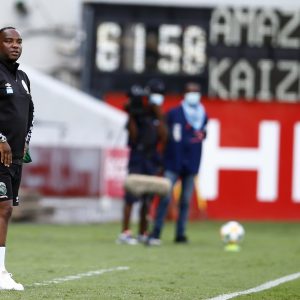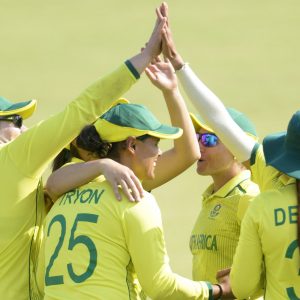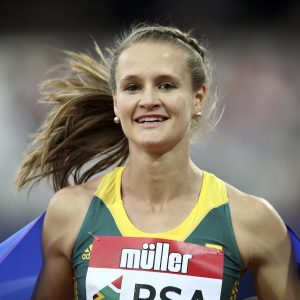Covid’s damage to SA football scouting and coaching
Professional football has been played behind closed doors since August 2020. Not allowing scouts and analysts into the stadiums has affected their work and altered the ways in which players are ana…
Author:
31 May 2021

Covid-19 has influenced every aspect of football globally, from empty stadiums to persistent injuries because of congested schedules that have to be rearranged to accommodate frequent testing and a myriad extra precautions.
A facet that has not been investigated thoroughly is the effect of closed stadiums on the DStv Premiership coaches and analysts in their preparation for the opposition. With the GladAfrica Championship barely televised, there are also implications for scouting players in the first division and for some teams that rely heavily on sourcing players from it. This, of course, affects the prospects of rising talents in the second tier being picked and moving up.
In addition, corruption in refereeing has remained a scourge of the non-televised first division and, with no crowds or journalists allowed in to cover the games, coaches say it has only increased during the pandemic.
In the elite league, Rhulani Mokwena, Mamelodi Sundowns’ co-coach, is renowned for his detailed analysis of opponents. He says television analysis has presented challenges for coaches and analysts who prefer to get to stadiums.
Related article:
“In the stadium you get to see the full profile of the team. Generally, what you want to see is how much the phases are in sync,” Mokwena said. “When the team is defending, how they set up to attack, and when the team is attacking, how they set up to defend. That you can only pick up in stadiums, because even when the ball is with the strikers, you are able to see the behaviour of the centrebacks and fullbacks, the positioning of the goalkeeper.”
An analyst in the stands is largely looking for chinks in the armour during transition moments, studying how a team on attack sets up the moment it loses the ball, or in defensive situations how they set up when they win the ball. Instead of getting the bigger picture, this is where television “gives you a frame where you see just four, five players”, Mokwena said.
“There are certain games you would like to go to live, particularly when you’ve got little information about players. It’s difficult to profile individual players off TV where you can’t watch one player the whole game.”
But, Mokwena concedes, “as difficult as it is, analysing off TV is not a train smash”.
Working with opponents
Coaches and analysts agree that there has been room for cooperation between clubs, such as sharing footage. Many clubs have also allowed opposition analysts at their games, placing them on the lists of officials allowed at a stadium on a quid-pro-quo basis, although this is frowned upon and sometimes blocked by Premier Soccer League officials.
“It depends on the relationship you have with the different clubs,” Mokwena said. “There’s nothing where we will work together as, for instance, Gauteng teams, but we have been granted access and we’ve also granted access to be part of our match-day group.”
For SuperSport United team manager Paul Matthews, the large number of analysts available to the coaching staff at mega-rich Sundowns is a luxury he envies. Matthews has been SuperSport’s analyst and scout as well, and added Covid-19 compliance officer to his duties since the pandemic hit South African shores.
Related article:
“Clubs like Sundowns would have somebody who, before Covid, could go and watch the opposition. They will have three or four people in that department. We don’t have those resources,” said Matthews. “I’m also with our team all the time. So even before Covid I didn’t really go to games live, unless, say, [the now defunct] Bidvest Wits were playing on a Friday night and you could go and watch them, or their opposition.
“For scouting, I like to travel to watch individual players live. But luckily, from my point of view, which you can also combine with the scouting aspect, we use online [sports performance analysis platforms] like Dartfish and InStat. InStat is very useful because they have a lot of footage – all the PSL games go on there, unless it’s not televised. Even for some non-televised games, club analysts often upload their [own] video footage.”
Matthews says at premier division level, a platform such as InStat has largely negated the challenges of analysts who are locked out of stadiums during the pandemic. “You pay a yearly fee to have the full use of InStat. If we’re playing Cape Town City, I can go to their team, see all of their players, all their fixtures,” he explained.
Related article:
“Then you’re able to, say, take their last five games, ask for all their corners, all their free kicks, attacking and defensive. That gets edited and broken down by a programme. I can look at their last 10 games and, say, they had 45 attacking corners, pull all of them, study if they had a certain routine with short corners, analyse all of them, put it into our presentation to our players in our team meetings. Then obviously we can prepare how we defend for that.
“Of course, teams then would want to surprise you, but generally you pick up the trends certain teams do. And even in South Africa, where teams chop and change coaches, a new coach might take over at Maritzburg United and I know that coach likes to defend corners zonally, or have man markers.
“Of course, it’s more important to focus on your team and your strengths. Because you can prepare all week to meet Stellenbosch playing a 3-4-3 and they can come with a 4-4-2. You have a few clubs, individuals or analysts who want to go into great detail. You can also overload your players with information.
“In an ideal world, you’d like to watch teams live. Someone like [Maritzburg coach] Ernst Middendorp will be at a lot of matches. Some coaches you’ll never see, and they’ll have someone they trust who they’ll send to report back. But if you’re focusing on set plays, for instance, it’s a lot easier to watch it on video, rewind, watch again, pause certain things. Most of the time, even before Covid, because you couldn’t always get to watch the opposition live, you’d use technology.”
Benefiting from technology
Matthews continued: “On InStat, for instance, in lockdown I can make a highlights package of our individual players and email that to them, and they just click on the link. You can send Bradley Grobler all of his goals, all Bongani Khumalo’s defensive movements, certain positional mistakes Teboho Mokoena is making repeatedly in midfield. Or the opposition has a defender who is very left-footed, who you want to force inside because that’s where he gives the ball away, but if you allow him to get down the wing he’s got a good cross.
“Or we can look at, as a group, the goals we’ve conceded, or if the coach says our crossing is poor, do a package with our crosses. Or you’re playing a team strong on crosses, highlights of all their crosses and ways to stop those. Now, coaches will say, ‘We’re going to stop the crosses.’ If it was that easy, you wouldn’t see a cross in a football match. I know coaches who’ve said they’ve trained all week for things and pitched up and the opposition have made seven changes.
“A lot of the younger coaches, some whom we call the PlayStation kids, who kind of think the game is played on an iPad, that’s where they fall short. Because they’ve read too many José Mourinho books and I think they overcomplicate things, or don’t quite understand the level of the players they’re working with.”
Related article:
So analysis is not an exact science. For coaches, the benefit of the information from analysts is that they have all the knowledge stored to aid their reactions on the touchline. And if these are then conveyed to the players properly, they can anticipate certain things on the field.
An experienced coach like Matsatsantsa a Pitori’s Kaitano Tembo, who has a modern approach, relies on his ingrained knowledge accumulated over years, but he also likes to have the information at his fingertips. Kaizer Chiefs coach Gavin Hunt, with whom Matthews has also worked at SuperSport, uses a more old-school approach. Hunt is almost uninterested in analysis and relies almost entirely on experience.
Matthews says almost all clubs in the top two tiers have analysts these days. “I would say most NFD (national first division) clubs have an analyst who would video their games. How they then use that information would vary.”
He says scouting from the NFD does become a challenge when stadiums are closed. “You have the NFD Show [on DStv’s SuperSport channels] that has a highlights package which you can’t scout from, but you can pick up if there’s a young player scoring goals. But generally what happens is an agent will bring his player to your attention and say, ‘Watch my player against Chiefs in a [televised] Nedbank Cup game.’ But, yes, scouting from the NFD is difficult for now.”
First division pros and cons
It is in this situation that cooperation between clubs can help. First division teams, for whom selling players on to premier division sides can be an important part of their business model, will benefit from allowing scouts into their games through their match-day list.
Closed stadiums have made analysing the opposition the toughest for coaches in the first division. Ian Taylor, who coached Cape Town Spurs (formerly Ajax Cape Town) from mid-January until losing his job late in April, says the degree to which coaches and players have intimate knowledge of each other, accumulated over seasons, is much lower than in the top tier. And there are cheats too.
“Some clubs use a company [for filming games]. For the Cape Town clubs, for instance, our analyst was in touch with that company and we all shared that footage. Some teams in Joburg also helped us. It depends on your relationships. Of course the footage is not great, so you get an idea of how teams play but you don’t get the real details,” Taylor said.
“To get the real details, you really need to be in the stadium or at least have games televised. But at the level we’re coaching at, sometimes that’s a good thing [not to have]. Especially our team who had a lot of young players – you don’t want to bombard them with too much information. If you focus too much on the opposition, you create unnecessary fear and doubt.
Related article:
“I’m more focused on us and what we need to correct. But you can just show players what the opposition do, then say these are where we have opportunities when we have the ball and where they are vulnerable, and when we lose the ball, what to do. I just ask for three clips of each moment, key players, and then their set pieces. How teams set up on set pieces, attacking and defending, can be the most important – that can win or lose a game.
“The NFD has always been difficult for analysis of the opposition because it’s not televised. In the NFD you get players literally coming from nowhere, especially the smaller teams that come from the smaller areas, who source a lot of local talent where they’re from.”
For Taylor, an equally big issue is the lack of a spotlight on the notorious refereeing standards in the first division. “It’s got worse with no journalists being there. No one actually sees what’s going down. That’s unfortunate because I think this NFD is a fantastic platform for young players, but unfortunately it’s so corrupt.”
Analysis has increased the strategic side of football, where every team seeks an edge and does not want to be caught lacking. Like so many aspects of life in 2021, Covid-19 has created unique challenges, accelerated digital solutions and changed the ball game.





